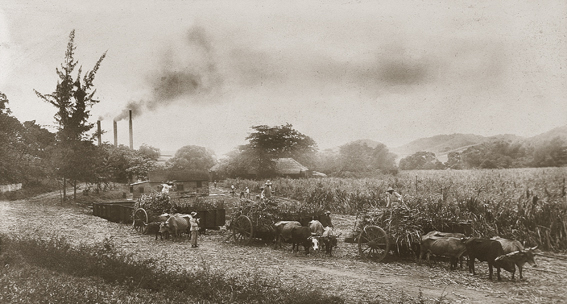A Brief History of Rum
Rum before the advent of Rum
In his Histoire générale des Antilles ( Paris, 1667-1671), Father Du Tertre is the first person who mentions a beverage which could well be the rum's ancestor. A few decades later, Father Labat notes a commonly consumed beverage called "l’eau-de-vie de cannes" (cane liquor). The terminology, however varies such as the word "guildive" — drawn from the English term, "kill devil" — or yet, "tafia". The word " rum" or the French, "rhum" which is not yet used, is derived from the British West Indies and Malaisia — "brum" where it means spirits.In the present day, there are two major types of rum, depending on the raw materials being used: agricultural rum, produced in nine out of ten rum distilleries representing 4/5 ths of Martinique's total production; and rum produced in the sugar factory, created by fermenting the molasses derived from the production of cane sugar. Martinique produces two different qualities of rum: traditional rum, following a short fermenting period; and the Grand Arôme, the result of a long and specific fermentation process.
The Apparition of Agricultural Rum
It is in the second half of the XIX th century that the development of the rum industry, separate from the sugar works, rapidly expands. The progression of the rum market share is then closely linked to world-wide overproduction impacting the entire sugar economy. It is during this period that the smaller sugarcane plantation owners convert their production to agricultural rum (or "rhum z’abitant", or “rhum de vesou” -plantation or cane juice rum). Concurrently, rum benefits from the curse that has hit the wineries in France. But it is due to the rations distributed to soldiers during the Crimean War which makes it ever so popular.
The 1902 Sudden Halt
Before 1902, rum represented almost 1/5 th of the total value of exports. The destruction of Saint Pierre entailed a 37% drop in production. Its revival began in 1905: the world of rum survived and the factories were upgraded. In 1913, Martinique exports over twelve million hectoliters, has ninety-six rum distilleries and sixteen sugar plants.
Wars and Quotas
Rum experiences its peak years during the First World War: this alcohol is needed for giving plenty of courage to soldiers in the trenches … and to manufacture explosives. But soon after the war, in order to foster the revival of its own liquors, France placed a restriction of rum imports into the mainland with the December 31, 1922 Act.
However, it is mainly the consequences of the Second World War which are a strain on the rum distilleries. Although intense trade with mainland France regains momentum, this bright spell is short-lived: the fifties mark the decline of the production systems inherited from the XIX th century and the beginning of a profound transition in Martinique's economy.
